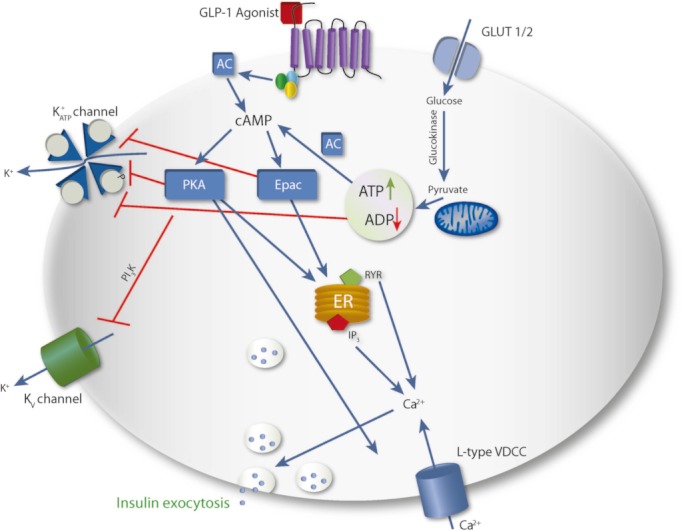Figure 6.

A schematic overview of the main signalling cascades involved in insulin secretion. Glucose enters the β-cell through the GLUT1/2 transporters and is converted to ATP. GLP-1 secreted from L-cells in response to glucose and other nutrients, binds to the GLP-1 receptor, triggering an increase in cAMP and activation of Epac and PKA; cAMP is also produced from soluble adenylate cyclase adding to the overall concentration of cAMP. Glucose metabolism leads to an increase in ATP/ADP concentrations which act to inhibit KATP channels. The inability to pump K+ from the β-cell leads to membrane depolarization and opening of VDCC. GLP-1-activated PKA and Epac potentiate the effects of glucose by further inhibiting both the K+ATP and the Kv channels, preventing repolarization of the β-cell. PKA and Epac also sensitize multi-subunit calcium channels on the endoplasmic reticulum (ER) allowing the release of calcium from intracellular stores. This increase in free calcium concentration further aids in exocytosis of insulin.
